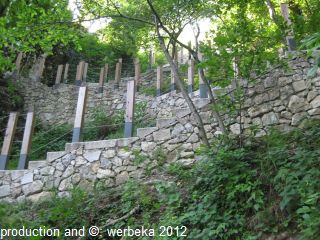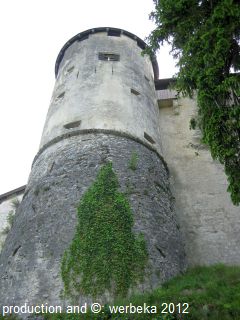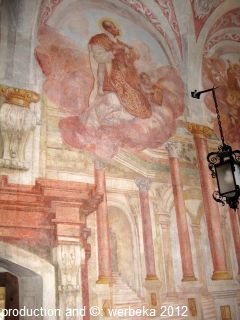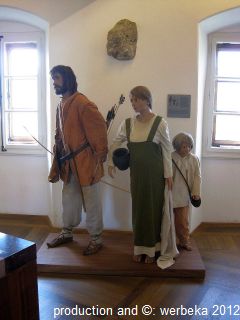
BLED CASTLE
Like most other castles in Slovenia, the building is used mainly as an exhibition-room today. Surely enough the site is beautifully restored, all the inner walls whitewashed, but apart from the outer walls there is not much left of the atmosphere of a castle.
Nevertheless the castle of Bled is a sensation through its location alone. Situated on a 125 meter high cliff, rising up from the lake, with gorgeous mountains as background - the castle is outstanding through that and in any case worth a visit.
But the climb claims a lot of tribut of the visitor. He has to conquer the 125 meters of hight. As a tourist, one doesn't know, that a street is leading up, respectively if the are any public means to get there ... But one can do the climb using the own strength, of course.
|
 |
 
It costs rather a lot of effort, though, because apart from a short footway in the beginning, there are 220 steps leading more or less directly into the air - and for finishing, one has quite another couple of hightmeters to get the better of.
|
On the other hand, there is a lot of time while climbing, to think about the history of the castle. It is the oldest castle of Slovenia, which is mentioned in writing. It is called Burg Veldes in German, by the way. The area has been part of the Austrian Empire during some 600 years. The Slovenians themselves call it Blejski grad. Mentioned for the first time, just after the first millennium, it is in a deed of donation. Emperor Henry II gave it away to the Bishops of Brixen. But as it is situated in the margraviate of Krain, it became part of the Habsburg Empire in 1278. The defending walls and the tower are the oldest parts of the castle, built in roman and gothic style. The inner buildings were created later, during the Renaissance. The castle consists of two courtyards, which are connected through a staircase. In the lower part of the castle there were the administrative buildings and the accomodations of the servants, whereas the margrave lived in the upper parts. In 1947 the roof of the castle burned. Four years later the restauration started, which took no less than a decade.
|
 |
Since then the castle is used as museum and is an attractive sight of the region.
The chapel, which is the only of the inner rooms, that was kept in its origin, is from the 16th century - and really worth a glance.
About a hundred years later it was painted with large frescoes, covering all the available space exept the floor.
|
 |
 |
Furthermore there is a wine-cellar, a restaurant and a forge inside the castle, but all of this was created at the restauration and serves today only for making money.
As mentioned before, even the outer walls of the buildings have retained their original looks, thus letting the visitor at least get an impression as to how it might have looked a long time ago. And finally, there is the view over the surroundings, the lake and not at least at the mountains - simply breathtaking
 
At last some words about the museum. It tells mainly about the historic evolution of the region, starting fourteen thousand years ago, when the Ice Age began to loose its grip over the European continent. Since that time people are living in this area. In the showcases there are the different findings exhibited, which were lost or left in the area, from stone axes to jewellery.
 |
Pitifully the white walls are not really supporting a historical exhibition. The original walls would have underlined the findings in a much better way. Though a plus are the figures of fishermen, hunters and even families. |
 |
They are real-sized and stand here and there and they give the visitor a hint of how they fixed the problem with dressing without buttons.
© Bernhard Kauntz, Wolvertem 2012
Back to  or to the or to the  of of 
last update: 29.5.2012 by webmaster@werbeka.com
|












